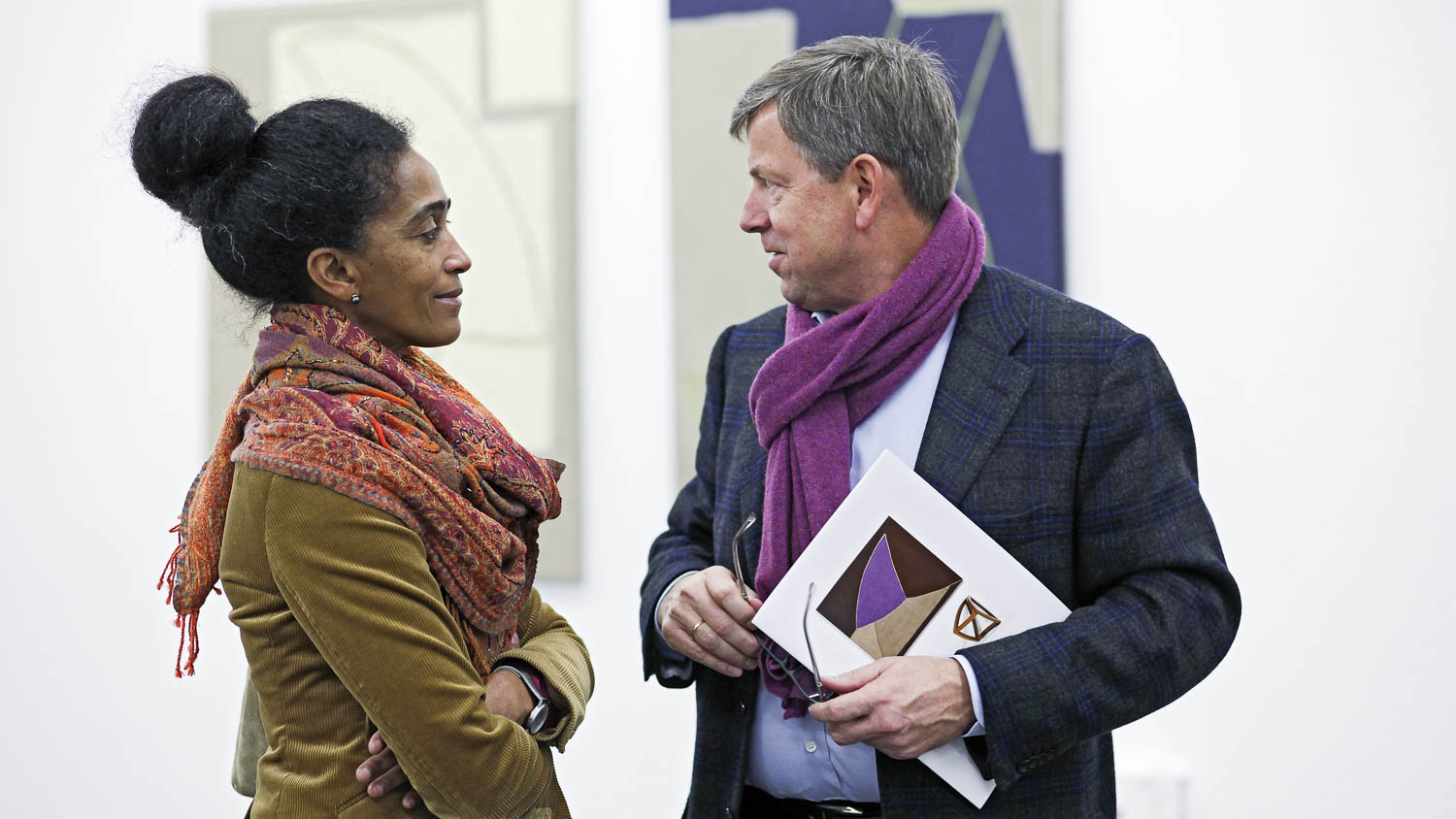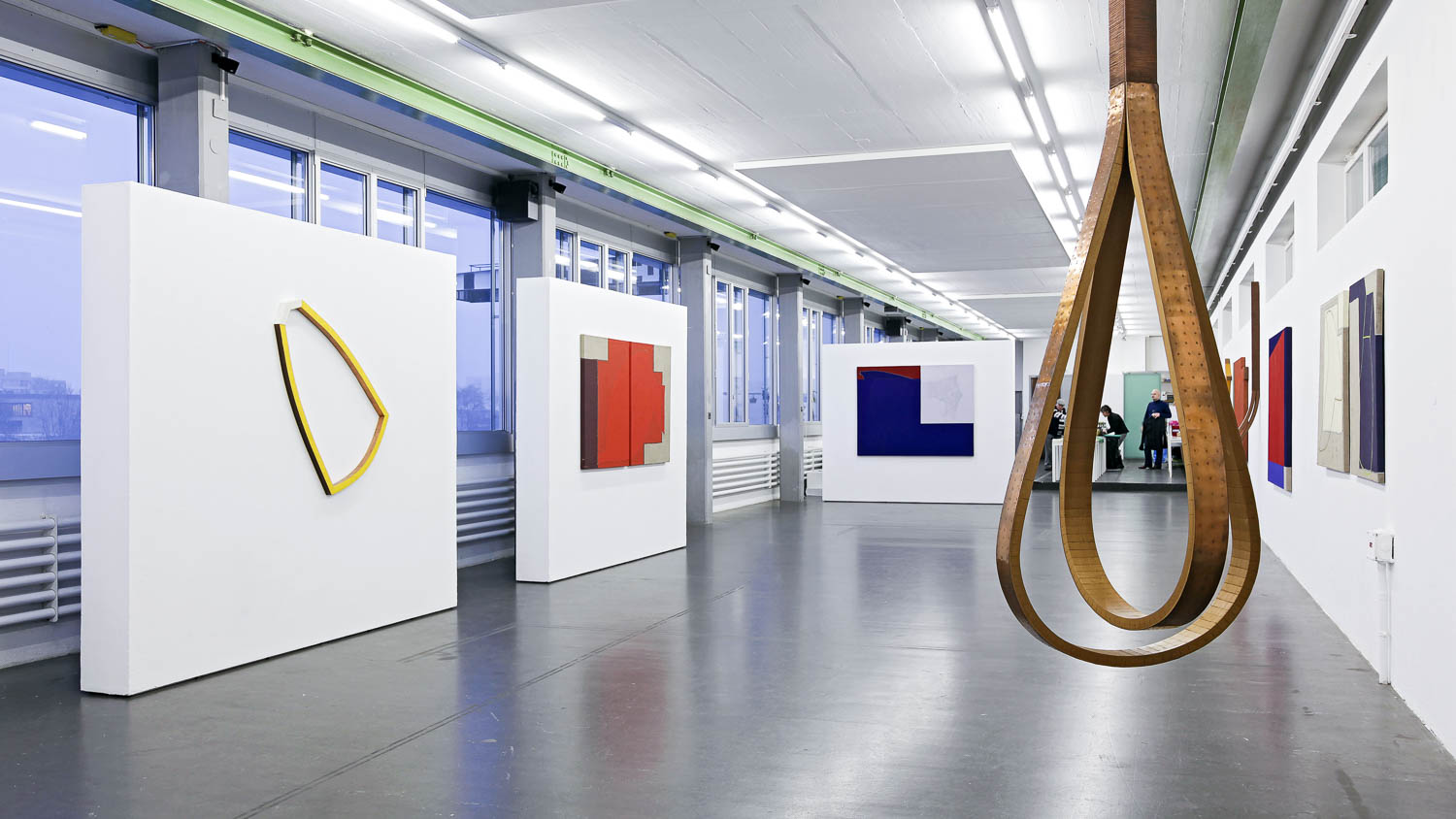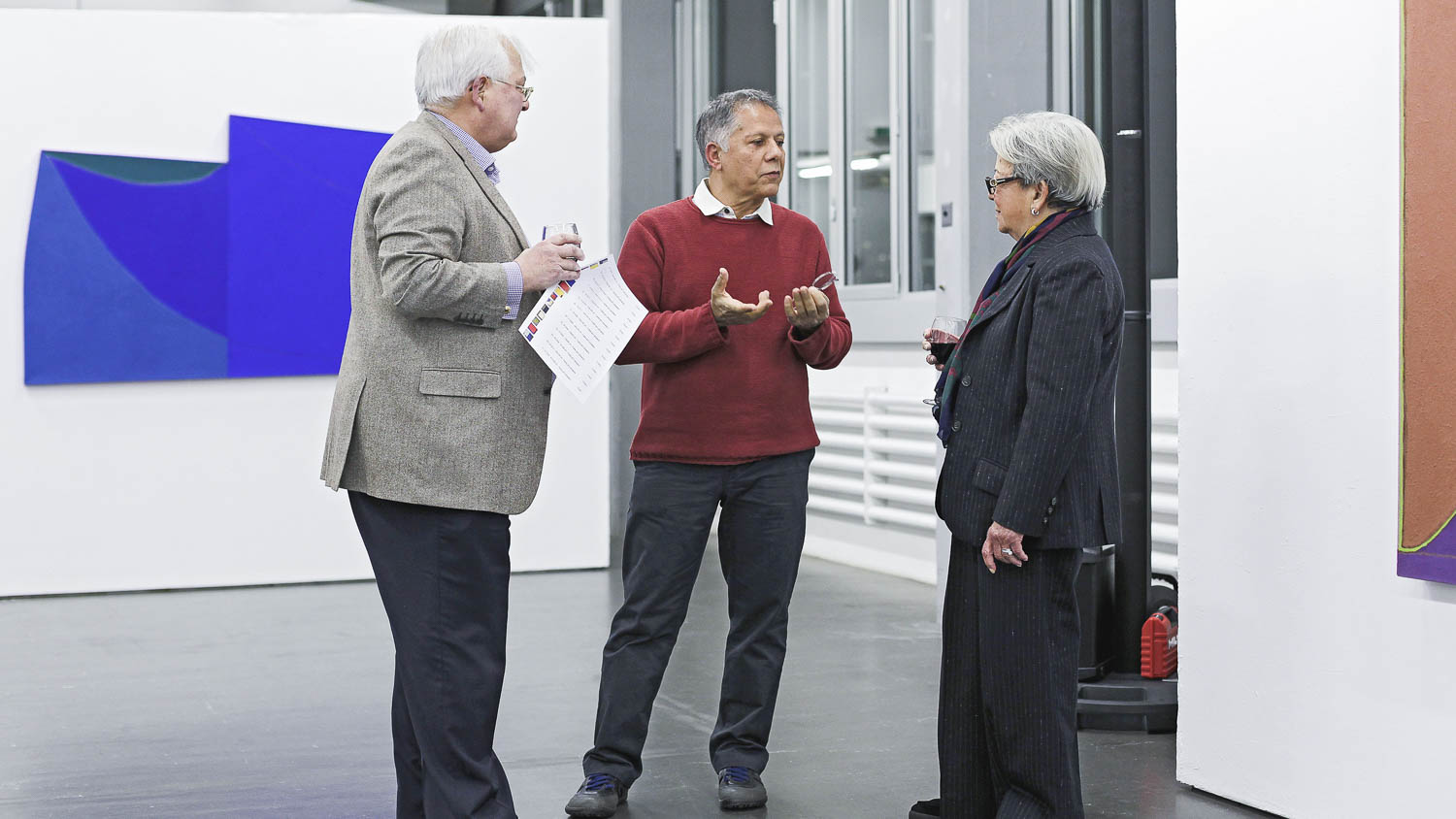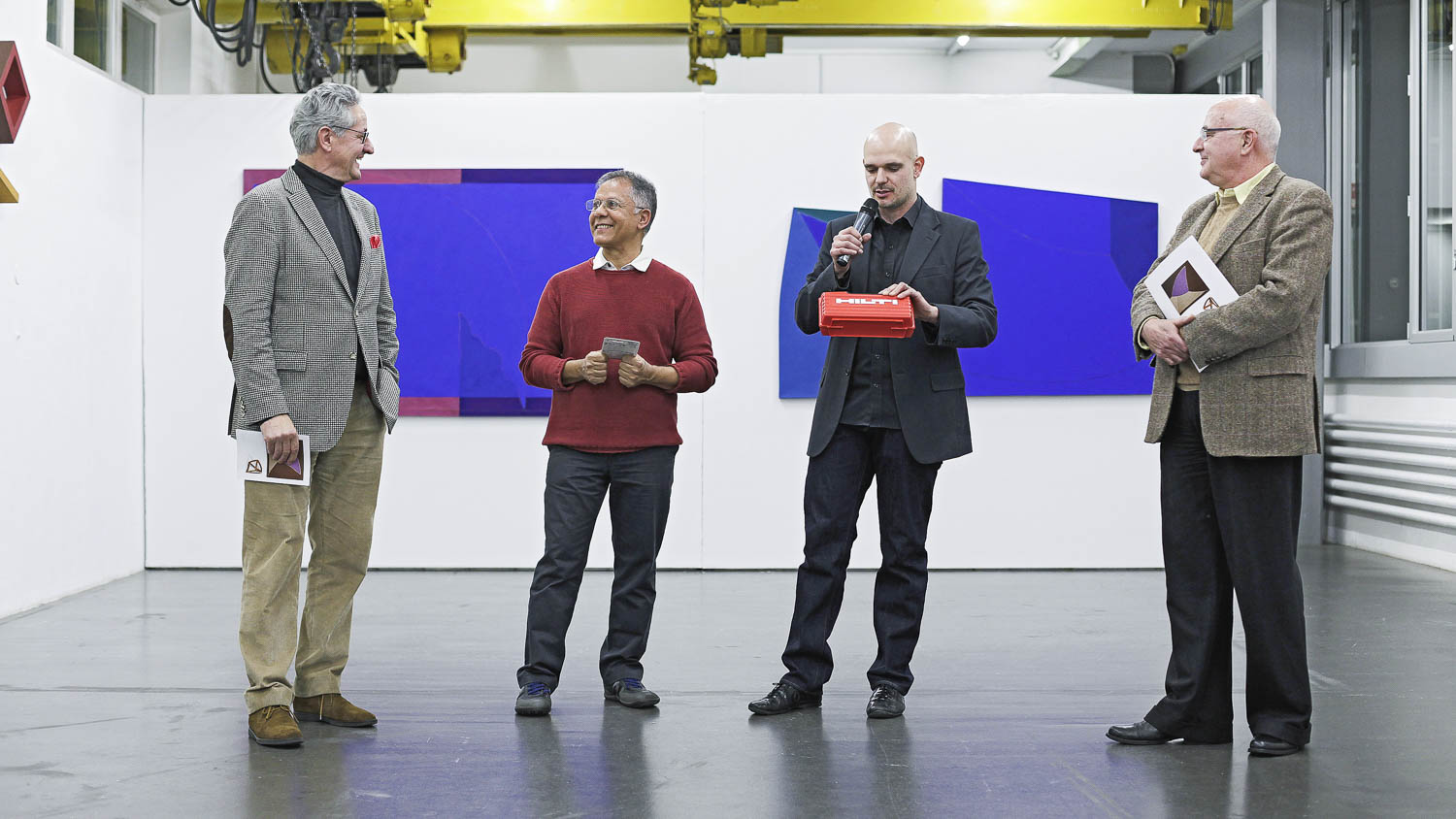Manfredo de Souzanetto – THE COLORFUL DANCE OF OBJECT-TOKENS
As I discovered Manfredo De Souzanettos’ work, towards the end of the 1980’s in Rio de Janeiro, I was most impressed by the straightforwardness and determination of his pieces. These canvases were of linear form, however somewhat irregular, object-paintings often embroidered with wooden cleats of which the colour rejected the chromatic shades of the industrial palette. It was as if their creator had undertaken a kind of retreat from modern tones – returning to methods of making that are more ancient than contemporary chemical colourings. He chose a scale that one may find in the landscapes of the paintings of Quattrocento. These were the colours, yet the earth: ochers that Manfredo de Souzanetto collected on roadsides or in quarries, in the landscapes that he was surrounded by, and in which he lived.
His work differentiated itself from what I was seeing in Brazil at the time, a painting style that was saturated with signs and figurative allusions, a mixture between tropical inspiration and cultivated New York graffiti. This decade saw the triumph of large-scale expressive “bad-painting”, the accumulation of narrative details that met the demands of an international market for art, who’s resources seemed without limits. Thirty years later, we now know the superficial elements of the eighties. Many of the well-known artists of that time have disappeared. And it all ended with one of the most subtle and deep crisis that the art market experienced.
In contrast to all this noise, and a kind of forced joy, this debauchery of movement, Manfredo de Souzanettos’ work was solid and quiet. So it stayed. He himself seemed solid and quiet, supported by strong convictions. It was so then, and it is so now, that he was attached to something that escapes the passing of time. I was coming from Europe, I grew up in Switzerland. I had shaped my own view of constructed art, a plasticised formalism and a graphic rigour, that are Helvetian specialities, despite the fact that they have come to know international resounding. The work I was discovering seemed familiar. It escaped however, the rigidity of the laws of the straight line, because in addition to the logic of construction, Manfredo de Souzanetto managed to include a kind of simmering, he added the presence of the hand and the action of the body to static geometry.
Since then, be it in the surface of his paintings or in his three dimensional pieces, his curved wood, defining shapes and emptiness, he explores the secrets and the transformations of space; he retraces, step by step the path that is marked since ever: that of man’s actions in nature. He is now exhibiting at the BRASILEA Foundation in Basel, Switzerland, over 10’000 kilometers away from the place where his work was conceived, in a region where the invention of abstraction and construction was deployed – maybe the only true innovation of the XXth century in the field of plastic arts, certainly the most important one – with such artists as Johannes Itten, Richard Paul Lohse, Max Bill or Gottfried Honegger, and closer to us: John Armleder, Olivier Mosset or Helmut Federle.
This movement originated in Europe a little less than a century ago. It influenced some of the most brilliant Brazilian artists of the generation prior to that of Manfredo de Souzanetto, followers of neoconcretism such as Hélio Oiticica or Lygia Clark. Its passage under the tropics has deeply marked its principle. The constructivists of Brazil did not only create paintings or sculptures, they also used their expression in performances where the body is engaged at the same level as objects. And this mixture of modes of expression has changed the spacial organisation of purely pictorial or sculptural works. The connection between art that manifests the presence of the body, and one that privileges the presence of the object, by maintaining the body at a distance is striking in Manfredo de Souzanettos’ work. He provokes a blurry effect, or a shift. An almost imperceptible gap that changes everything, an imbalance that forces one to reconstruct the integrity of ones perceptions. In contrast to European constructed art, which is stable or moves upon itself without leaving it’s centre, that of the Brazilians escapes its own construction.
Brazil has not always been one of the greatest powers of the planet. Her art has been in development and influenced because she needed to participate in the world, and in the difference, she needed to remain herself, with and against all that was happening in cultural metropoles. Brazilian art was not at the heart of the battles, she has often been able to escape the brass laws of competition between the artistic movements. She was able to absorb impurity and anachronism, without the risk of excommunication. And finally, to renew the bonds of a history that the illusion of progress in art continually attempts to damage.
In the year of 1824, the British painter John Constable (1776-1837) exposed two of his canvases at the Salon of Paris and declared: “I believe with certainty that these will be able to shake the hearts of stone of French painters”. The previous year, Eugène Delacroix writes in his diary “Today, I have been to see Régnier, in whom I have observed a sketch of Constable, admirable and incredible”. What is so incredible about Constable, who pushes the young generation of painters at their beginning to work in the outdoors, while the British have been doing so for some time? His capacity to represent on the canvas a field of perception that no longer obeys the laws of academic construction and an atmosphere that no longer carries the artificial feeling of the atelier. This is the start of an aesthetic revolution that will lead painters to search for direct contact with nature and to put forth their own sensations rather than the classic models of composition. From this moment on, the body of the artist enters the painting. If it was already represented as a figure beforehand, it is now the body that is in command.
Manfredo de Souzanetto unites the experience of the outdoors with that of construction. He is strolling. He encounters the matter he will use in his art during his spiritual and material wonderings. He has sometimes intervened in the places where he was wondering, in particular in the forrest of Fontainebleau near Paris, where he has painted on a tree trunk. In the XIXth century, Jean-Baptiste Camille Corot, Théodore Rousseau and other members of the “Ecole de Barbizon” have worked in the same forest. The difference in their paintings however is that Manfred de Souzanettos’ work is non-figurative, in the sense that it does not offer the interpretation of something recognisable. He does not return images that he may have painted on his canvases, neither does he express remembrances that may have inspired him. He returns with something, the colour, the matter, and the sensation-remembrance of himself in the place he has been.
The paintings of Manfred de Souzanetto are neither square, nor rectangular, nor round, nor oval, like most of the work created until the XXth century. In the Middle-ages, there have been painted crucifixes, composite polyptychs; later, canvases of non-orthogonal format when they were destined to decorate churches or buildings. However, from the low renaissance to the XXth century, to the Russian constructivism of Rodchenko and Tatlin in particular, the shape of the base was regular, to the point that it was codified by Jean-Auguste-Dominique Ingres in the XIXth century for the purpose of commercialisation. From the point of view of plastics and perception, such bases are to be forgotten in a certain ways, because painting exists between their limitation and makes them disappear, in which case, the format is nothing but a vicissitude.
In the XVth century, Alberti, in “De la peinture”, talks of a window through which we may see l’Historia. Erwin Panofsky, in the XXth century, says in “La Perspecitve” as symbolic form that the illusionism abolishes the surface of the painting. The visual event herby exists independently of the geometry of the base carrying the work. Therefore, an abstract painting or a monochrome made on a standardised canvas is an ensemble of coloured shapes or one single colour enclosed within the limitations of that canvas. In other words, a non-figurative image; however, an image all the same. The Russian constructivists, who challenged even the existence of the canvas, adopted irregular formats and invented, what they called counter-reliefs. What they were striving for was the creation of a new kind of object, existing in its integrity, which included the base upon which it was made. Hereby, eliminating the concept of Historia, that is all possibility of narrative, for the benefit of a direct relation to space.
The irregular geometry of Manfredo de Souzanettos’ work inhibits the viewer to rely upon a story, where the painting may be the teller. It is never a question of an image, only of what it really is. Shapes, lines, colours, matter, even when he leaves the surface and creates three-dimensional objects such as his curved wood of the end of the 1990s and 2000. When viewing them, one sees: “colour”, “wood”, “curves”, “movement”, “fullness”, “emptiness” etc. At the same time, we know it is about colour, wood, movement, immobility, fullness and emptiness. These are object-tokens.
When Manfredo de Souzanetto goes looking for colour in the landscape, that he then transforms into an object-token, and that he offers for viewing, he provides the spectator with an experience both close and distant to what painters of the outdoors of the XIXth and the ealry XXth century were attempting to convey. He shares an experience that is communicated through matter, rather than through imagery. In the same way as the painters of the outdoors did, Manfred de Souzanetto brings back a piece of the landscape. Like them, he transmits the experience of the body in the landscape. However, instead of the spectator being brought back to a place and a time – this is the case of the “Meules de foin”, the “Cathédrales” or the “Nymphéas” of Monet for example – this experience refers only to the object and the situation. To the simple encounter of the work and the viewer, he creates an event.
This work is bare of discourse and staging, these object-tokens, that one must observe without asking what they are, this direct connection between construction and expression, between moment of life and immediacy of perception, Manfredo de Souzanetto was able to conceive because he comes from afar, because randomness has lead him throughout the world. He is everywhere and in one place. He acts in the manner of someone who is from somewhere. As John Constable stated: “I believe with certainty that these will be able to shake the hearts of stone of French painters”, about the work he was exhibiting at the Salon of Paris in 1824, so will the object-tokens of Manfredo de Souzanetto most definitely stir the hearts of stone of narrators and surveyors. These will be heard by those who enjoy listening.








